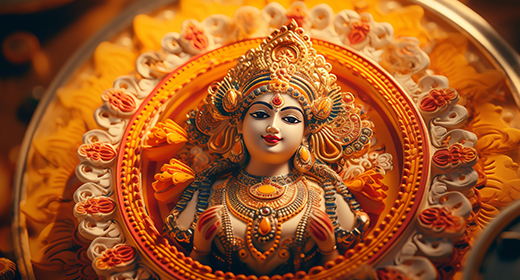
What is the Gayatri mantra and its benefits?
In this meditation blog, we share our insights on the benefits of chanting, a popular Mantra in Yogic Tradition from the ancient Indian book "Rigveda".
There are various techniques of Pranayama. Here we will discuss some of them from the beginner to the advanced levels. Please note that we are only discussing the techniques and their benefits. This article is in no way meant to serve as a guide.

Pranayama must always be learned from a competent teacher and only when you have reached certain levels of discipline in your practice.
1. SURYA BHEDANA (OR BHEDI) AND CHANDRA BHEDANA (OR BHEDI)
2. ANULOM VILOM OR ALTERNATE NOSTRIL BREATHING
3. NADI SHODHANA

To talk about this we first have to refer to the Nadis. The human body is made of 72,000 Nadis. These are invisible energy channels in the body. However, there are 3 main nadis and these are the Ida, Pingala and Sushumna nadis.
The Ida is said to be connected to our left nostril which is connected to the energy of the Moon. When we breathe through our left nostril, we are actually using the right side of our brain which is more creative and artistic. the energy of the Moon is also cooling, calmer and positive.
The Pingala Nadi is connected to our right nostril which is connected to the energy of the Sun and here we are using the left side of our brain which is more analytical and logical. The sun energy is said to be warmer, strong and active.
Sushumna Nadi is when we breathe through both nostrils and in these moments there is a sense of calm energy flow throughout the body because Ida and Pingala are in balance. The practice pranayama is to help activate the Sushumna nadi.
Hence when we practice Surya bedi, we inhale and exhale through the right nostril while in Chandra bedi, we inhale and exhale through the left nostril.
Surya - Sun Bhedi - awakening / activating.
Sit in a comfortable position, preferably on the ground. With your spine erect, shoulders pulled back and your legs crossed. With the left hand, make the Nasagra mudra, ie. you will use your thumb to close your left nostril, your little finger and ring finger stay curled inside. If you wish, you may rest your index and middle finger on the centre of your forehead or leave it loose in the air. Your right hand will remain loose on your knee, palms up or down are up to you in Gyan mudra. While closing your left nostril, exhale through your right nostril and inhale through the same nostril. Repeat the process of Inhalation and Exhalation at least for 3 minutes. Gradually with practice, you can increase the time.
Please note that the Surya Bhedana shouldn’t be practiced if you are suffering from anxiety or depression or other mental illnesses, if you have a fever, if you have a dominant pitta personality or during the summers.
Chandra - Moon Bhedi - awakening / activating.
The practice is the same as the Surya Bhedi but it is practiced with the right hand on the right nostril. So we inhale and exhale through the left nostril thus activating the Chandra Nadi and the Moon energy.
Please note that Chandra Bhedana should not be practiced if you are suffering from a cold or cough, or have heavy sinuses in winters.

In this practice we inhale through one nostril and exhale through the other. We create a sort of circular flow.
Sit in a comfortable position. It is preferable to sit on the floor in a cross legged position. If this is difficult for you to do, sit on a chair and cross your legs at the feet. Place your hands on your knees, palms facing up and your fingers can assume the Gyan mudra or any other mudra of your preference. Assuming a mudra helps contain the energy that would escape from your fingers. Make sure that your back is straight and your spine erect. If you are sitting on a mat, you can place a block or cushion below to help lengthen your spine, it will assist you in sitting on your sitting bones inserted into your bum cheeks.
Now when you are ready, with your right hand, assume the Nasagra mudra. Close your right nostril with your thumb and exhale fully from the left nostril. Inhale deeply from the same nostril, close the left nostril with your little and ring finger, release your thumb and exhale out from the right nostril. Now inhale from the right, close the nostril with your thumb, release your ring and little finger and exhale from the left. This is one round. Inhale from the left, exhale from the right. Inhale from the right and exhale from the left. The length of the inhalations and exhalations should be the same on both sides. Repeat the process and make sure to keep flowing in a circular motion with the breath. Do not take breaks or pauses in between. One can maintain a count to make sure that the time taken for each breath is the same on both sides.
Practice at least 5 - 10 rounds. After a week of regular practice, if there has been no difficulty, then increase the length of the Inhalation and exhalation.
After a few months of regular practice, add an extra count to the inhalation and 2 extra counts to the exhalations. .i.e, your exhalations will become longer than your inhalations.
Remember to smile.
Over time you will start to notice your heartbeat and pulse rate slow down, people with respiratory problems such as asthma or bronchitis, experience a lot of relief. A calming rhythm is established in the brain and heart, it improves concentration, relieves anxiety, and other stress related disorders.
Anulom Vilom can be practiced for a minimum period of 15 min and a maximum period of 30 minutes
Anulom Vilom is practiced with the right hand for those with High Blood Pressure and with the left hand for low blood pressure patients.
Before starting Anulom Vilom, one can also check your nostrils to see which is more active, then use the same hand as the active nostril and start with exhaling from that nostril chamber.
This technique should not be practiced by an individual who has just suffered from a heart attack.
When Anulom Viom can be performed with complete ease, then one can move on to Nadi Shodhana

Nadi - subtle energy channel.
Shodhana- purification. By this technique, we are working to cleanse the Nadis in our body thus bringing about a balance in our system.
This is made of 3 aspects:
Kumbaka is further divided into
Antara Kumbaka - retention after Inhale
and
Bahari Kumbaka - retention after Exhale.
The main difference between Anulom Vilom and Nadi Shodhan is the Kumbaka or retention.
Sit comfortably with your spine erect, legs crossed and in a comfortable position. Smile and follow the same procedure to get into the posture as Anulom Vilom.
Close the right nostril and inhale slowly through the left nostril for a count of 5. Now close both nostrils and maintain the air in the lungs for the same count of 5. Open the right nostril and exhale slowly for a count of 5. Inhale through the right nostril for a count of 5, close the right nostril and maintain the air in the lungs for a count of 5 with both nostrils closed. Exhale from the left nostril with a count of 5. This is one round. Repeat for 5 - 10 rounds.
Over time, one can increase the counts to 6, 7 and eventually 10, with a ratio of 10:10:10, ie. 10 counts for the inhalation or Puraka, 10 counts on the inner retention or Antari Kumbaka and 10 counts on the exhalation or Rechaka.
There are various stages of advancement and many months or years of practice before one can begin Bahari Kumbaka. Please ask an experienced teacher before proceeding further.
In this technique, one holds the breath in the lungs after exhaling as well.
Practicing Nadi Shodhan activates various brain centers and harmonizes the pranas. The benefits increase with the progression of the ratios. It gives profound psychological and pranic effects. It is not recommended for asthmatics.
Some points to remember when practicing Pranayama:
Those suffering from heart diseases, high blood pressure or epilepsy, or anyone who has undergone brain, heart or abdominal surgeries should consult a medical expert or consultant before starting any pranayama technique.
It is believed that Prana travels in and out of the body through our hands and feet. This is why we use Mudras or hand gestures to prevent the Prana from leaving our bodies during the practice and keep our feet in a cross legged position or cross our feet if we are sitting on a chair.
The most common Mudra used is the Gyan Mudra also known as Nasika Mudra or Vishnu Mudra.
This is done by placing the hands on the knees, palms facing upwards, and the thumb and index finger tips touching on each hand.
Our awareness during the any of the techniques should be placed on the breath and counting. It is quite easy for the mind to wander. Be aware of this and bring your attention back to the breath and count. Over time, this awareness will return automatically. How much time varies for each individual.
We highly advise that all Pranayama practices must be learned in person from an experienced teacher. The teacher will help you work through your doubts and issues, guide your progress and let you know when you are ready to start pranayama, which pranayama technique you should use and when you can advance in your levels.
Both pranayamas are almost similar but there is no retention of breath (kumbhak) in Anulom Vilom. While in Nadi Shodhana, you need to hold your breath inside (antar kumbhak) after every inhalation for as long as possible.
Chandra Bhedi and Surya Bhedi Pranayama are mutually opposite.
It is practiced to purify the Pingala-nadi which further boosts solar energy, increases confidence, enthusiasm, willpower, balances the root chakra, enhances the vitality of the body as well as gives relief from stress, anxiety, and depression.
In Surya-Bhedana Pranayama, you always inhale from the right nostril, then do retention of breath for as long as you can and slowly exhale from the left one.
It is done to purify and activate the Ida-nadi which leads to the cooling aspect and the parasympathetic nervous system. It calms the mind, relieves mental tension, and positively impacts in case of pitta diseases.
In Chandra-Bhedana Pranayama, you always inhale from the left nostril, then do retention of breath for as long as you can and slowly exhale from the right one.